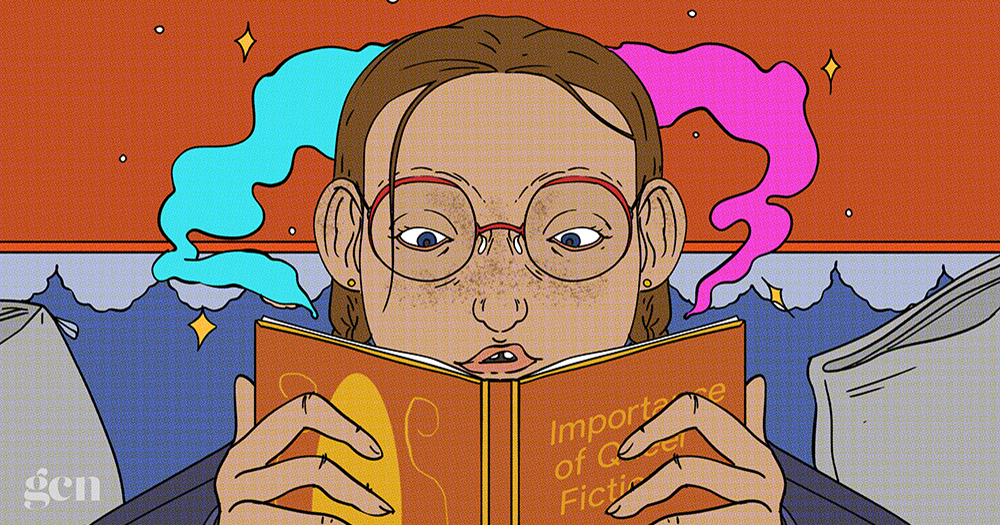GCNnewvoices in partnership with BeLonG To will platform the opinions and thoughts of LGBTQ+ young writers from across the country, speaking about issues that matter to them. Shauna McNamara talks about the lack of LGBTQ+ representation in literature and how having more of it could help younger people.
LGBTQ+ themed literature has helped affirm my identity and been a source of comfort as I travelled my own journey of self-discovery and asked myself the question that never seemed to have a ‘straight’ answer. In case you’re wondering, the question is “who am I?”
When I was 12 years old, I read a book called Dreadnought by April Daniels. For those who have not heard of it, the story revolves around a trans girl whose life is turned upside down when she becomes her city’s newest superhero. At the time, it had not occurred to me that this was the first book I had ever read that featured an openly LGBTQ+ character. In fact, my only thought was how much I was looking forward to reading the sequel. However, looking back, I cannot help but wonder why I had never read a book whose protagonist was LGBTQ+ before the age of 12.
There simply are not enough LGBTQ+ characters in children’s books. Yes, YA books are becoming more and more inclusive, even managing to correctly portray a person’s sexuality and gender as a part of their character, and not their whole identity. Valkyrie Cain from the Skulduggery Pleasant books came out to her parents as bisexual, and Six of Crows by Leigh Bardugo gives us a unique and exhilarating story in which the characters’ identities are so much more complicated than labels and boxes. Meanwhile, Riley’s journey as they try to come out to their parents as gender-fluid brings us on an emotional rollercoaster in Symptoms of Being Human by Jeff Garvin.
But is this enough? What about the world of Harry Potter, which refuses to show its characters as anything other than cisgender, straight, abled and white? What about the Disney Princesses? Why can’t their knight in shining armour be a woman for once, or, even better, why can’t they be the knight in shining armour? Why, when reading to my younger cousins, am I never able to see any characters that are like me? And, at the time of writing, I have still not been able to get my hands on a book featuring an ace or aro person, and that is at 15, nearly 16, years of age.
Finding myself represented in the literature I read is something that is very important to me. Not only because I spend every second of my free time reading and writing stories, but because it helps me to understand my identity. None of the plays performed by the drama group I am a part of has ever featured an LGBTQ+ character, and every single one of the books studied in my English class were crowded with straight, cisgender characters with not a single queer person in sight.
If schools still refuse to teach you about gender identity and sexuality, how else are you supposed to come to terms with your own?
© 2020 GCN (Gay Community News). All rights reserved.
Support GCN
GCN is a free, vital resource for Ireland’s LGBTQ+ community since 1988.
GCN is a trading name of National LGBT Federation CLG, a registered charity - Charity Number: 20034580.
GCN relies on the generous support of the community and allies to sustain the crucial work that we do. Producing GCN is costly, and, in an industry which has been hugely impacted by rising costs, we need your support to help sustain and grow this vital resource.
Supporting GCN for as little as €1.99 per month will help us continue our work as Ireland’s free, independent LGBTQ+ media.

comments. Please sign in to comment.